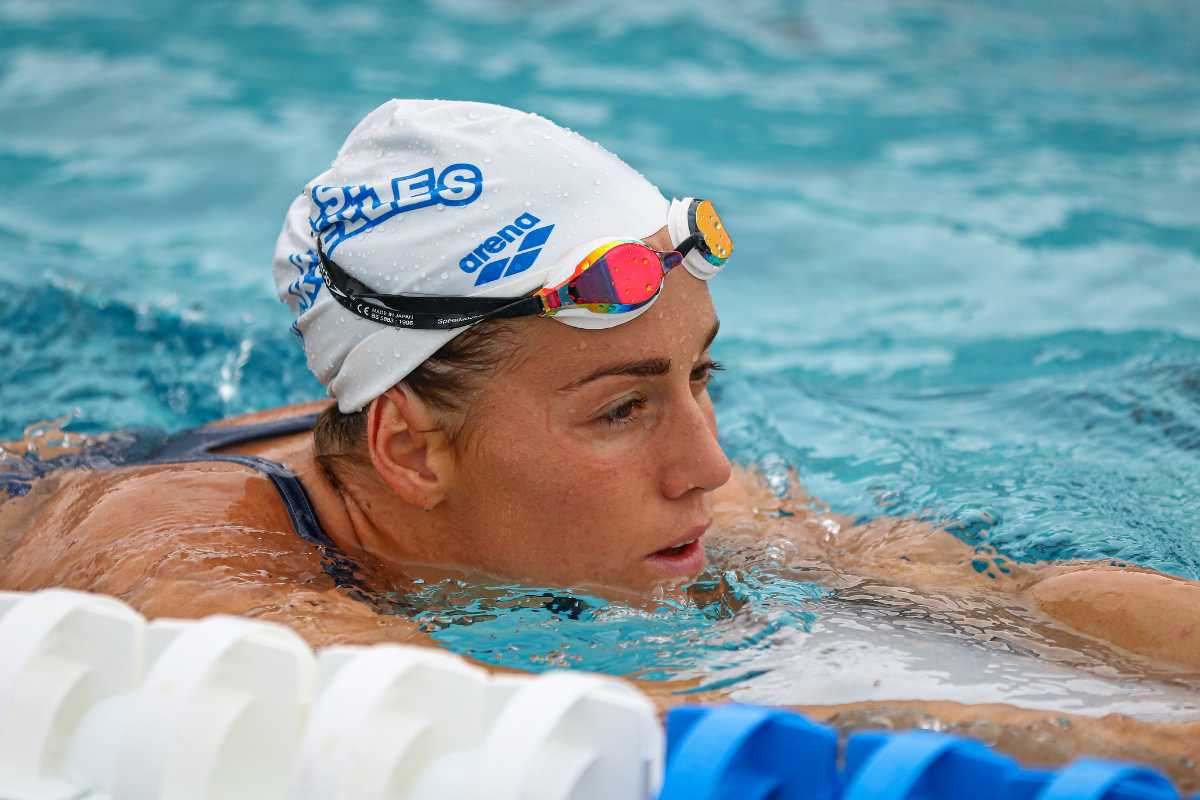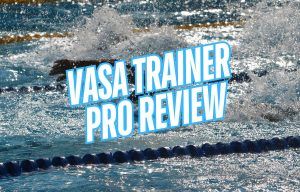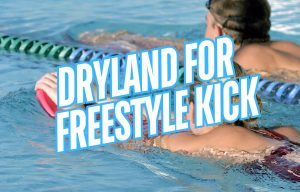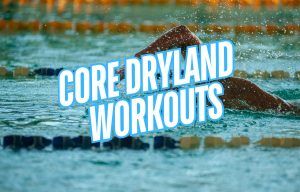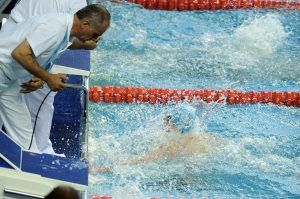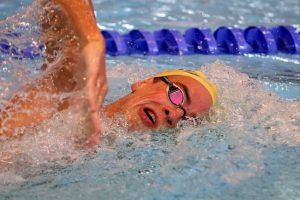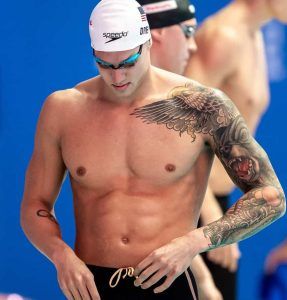Looking to get more speed from your kick? Add this dryland exercise to your swimming warm-up before your next all-out kick set.
Swimmers are always on the prowl for ways to drop the precious fractions of a second that can make the difference between victory and defeat, a new personal best time, or adding time.
While a lot of attention (understandably) goes to developing upper body strength for a faster and stronger pulling motion, the kick is where swimmers can really shine.
After all:
- A strong kick sets up a strong pull.
- Kicking helps maintain an efficient body position in the water.
- Kicking is the exclusive driver of fast underwaters, making up to 60% of race distances.
In the words of David Marsh, 12-time NCAA champion coach and Team USA Olympic coach in 2016, “Faster kicking makes faster swimmers.”
Outside of adding heaps of kick sets to your swim workouts and incorporating dryland training into your routine, swimmers can use post-activation potentiation (PAP), a form of neuromuscular priming, to inject more speed and power into their kicking.
In this article, we will look at a study that examined the effects of a lower-body PAP intervention on kicking speed with competitive swimmers.
Let’s dive right in.
Post-Activation Potentiation for a Faster Kick
A study titled “Human thrust in aquatic environment: The effect of post-activation potentiation on flutter kick” took a group of 16 experienced competitive swimmers and divided them into two groups.
The goal was to see if a lower body post-activation potentiation (PAP) intervention would improve kicking speed. PAP is a form of neuromuscular priming that has been shown to increase athletic performance across a variety of sports.
Each group of swimmers performed a different warm-up and were tested for freestyle kick speed in a 25m trial.
The two warm-ups were as follows:
- The control group performed a 1,400m pool-only warm-up with various sets and drills.
- The experimental group (PAP) did 700m of swimming and then performed 2×5 countermovement jumps, with 2 minutes rest between sets.
Once the warm-ups were completed, the swimmers took an eight-minute break and then performed a 25m freestyle kick for time.
See also: 10 Dryland Workouts for Swimmers
The results?
The PAP group scored higher in peak thrust (+15.14%), mean thrust (14.6%), and increased kicking frequency (3.17%). The PAP group also had reduced speed fluctuations (-9.68%).
Which all sounds fine and dandy.
But did they go faster?
Yes. Significantly.
The swimmers who did the PAP intervention increased their kicking speed by 11.6%. When performing a regular warm-up, swimmers kicked at 0.59 m/s, whereas the PAP warm-up kicked things up (sorry) to 0.66 m/s.
The researchers, doing back-of-the-napkin math, estimated that this would increase swimming speed by 1.0 to 1.5% in a swim race.
Not bad for an intervention that required no additional time or equipment to see substantial improvement in the pool!
Key Takeaways
- A warm-up with 2×5 countermovement jumps can increase kicking speed by 11.6% in experienced competitive swimmers.
- This improvement could yield an estimated 1-1.5% improvement in full swimming speed.
What is post-activation potentiation (PAP), and how can it benefit swimmers?
Post-activation potentiation is a physiological phenomenon where a muscle’s performance temporarily improves following a resistance exercise.
It can help swimmers improve swim speed, peak swim velocity, and swim start performance.
Studies have shown PAP to improve 50m freestyle time trials with nationally ranked swimmers (Sarramian et al., 2015), boost the start performance of international sprint swimmers (Kildruff et al., 2011), and decrease 100m times in collegiate swimmers (Hancock et al., 2015).
How can swimmers determine the proper latency period for PAP sets?
The latency period is the time between the loaded exercise (countermovement jumps) and the dynamic movement (25m kick for time).
Research on the *perfect* latency time is a bit mixed and will vary by individual, but in this case, the latency period was eight minutes.
Other papers examining post-activation potentiation with swimmers have found latency periods of 3-12 minutes improved swimming performance.
Swimmers can use this knowledge to time their PAP protocols in training and in competition for peak performance in the water.
How much does the kick contribute to swimming speed?
The kick contributes 10-15% of propulsion during full swimming, with the upper body and arms generating the remaining 85-90%.
However, those figures can be misleading, as they don’t account for what else the kick does during full swimming, including setting up the pull, powering the coupling motion of the arm recovery, and, of course, being able to kick rapidly and efficiently off the walls and dive.
Additionally, having a well-conditioned kick means you can close races with a full kick, surfing past the competition.
Wrapping It Up
The importance of kicking in swimming always generates a healthy debate, and ultimately, the answer to how much time you log on your trusty kickboard will come down to your goals in the pool.
Fortunately, with the intel from this little study, there is evidence that you can get more from your kick without having to spend more time in the pool.
Try the PAP protocol detailed above the next time you have a full-effort swim ahead of you and take your kick and swimming to another level.

